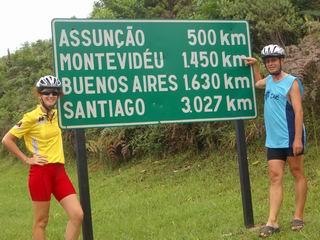
21 – Nov. 21, 2005
São Sebastian – Guaruja – São Paulo – Itararé – Jaguariaíva – Reserva – Campo Mourão – Cascavel – Foz do Iguaçu
Fame! Just as we were stripping for a midday dip along the Costa Azul, (the sun was shining), we were accosted by the local newspaper sports photographer short of a story for his evening deadline! Guess there aren’t many football fixtures on a Friday. The half-hour interview that followed when the reporter arrived was nicely condensed into a picture caption with a fair deal of poetic license ! Oh! And while we’re on the subject, we forgot to mention our TV filming and interview as we left Rio de Janeiro. Tune into The Bike Reporter, Sundays at 8 pm on Rede 21, and you might be lucky to catch a glimpse of our grand departure.

The coastal road south continued to offer beautiful views in the state of São Paulo, but they did come at a price. Exiting São Sebastian, the extreme inclines were reminiscent of our departure from San Sebastian, Spain. What is it with this saint? For us he has well earned
the title: The patron saint of hyperventilation!
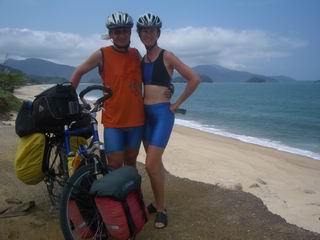
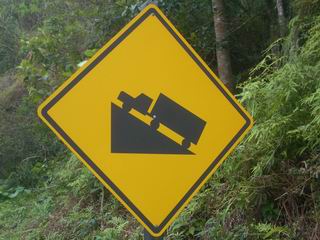
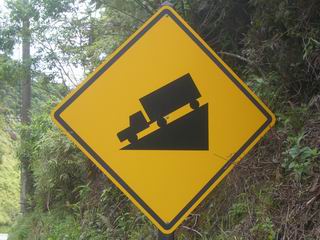
The immensity of the megalopolis of São Paulo is hard to describe. Just imagine riding 5 km through skyscrapers, just to find out that the center is still some 7 km away…described as very near by locals. We were very thankful to have our obliging host, Luís, guide us skillfully in and out of rush-hour traffic lanes on his city bicycle.
By means of the warm shower list we got in contact with Luís about a year ago. He has been wonderful with his suggestions and advice on where to go and what to see in South America. His hospitality in São Paulo was second to none and made our stay in this concrete jungle all the more pleasant. Then, on our departure, to save us the scenic tour of western suburbia, Luís kindly dropped us at the beginning of the green belt that surrounds São Paulo.
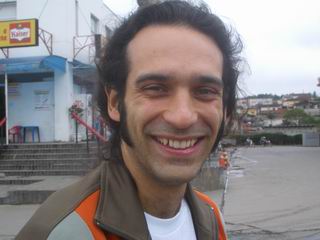
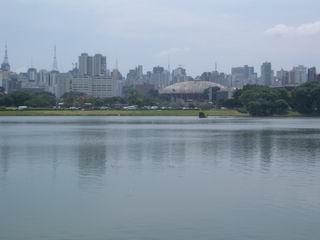
As the Brazilians will let you know, São Paulo is the place to work. And work they do! In fact, the Paulistaswork so hard that the Cariocas (Rio natives) can spend the whole day on the beach!!! The city is quite the melting pot of cultures and represents what Brazil is: a whole lot of different races, all speaking Brazilian. Native Indians, black slave descendants, and Portuguese are joined by immigrants from Italy, Germany, Holland, Japan, and The Ukraine, to name but a few.

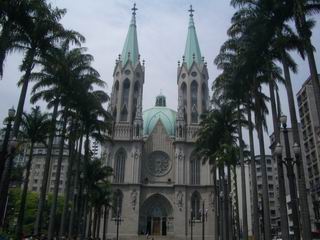
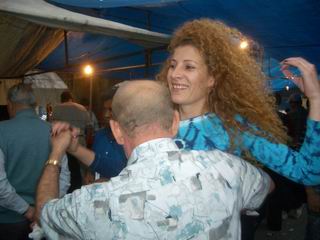
No visit to São Paulo is ever complete, but what you shouldn’t miss is a stroll down Avenida Paulista, a dynamic financial center, and a wander through the historical center with its nearby colourful and animated street markets. If you need more information on São Paulo – ask Luís – he’s a font on information and will most certainly figure out an itinerary to keep you busy for weeks!
Feijoada is a very filling bean and pork casserole, served with rice, manioc flour and cabbage. It is normally served on Saturdays… so that you have all of Sunday to recover afterwards! Here we are with Luís’ parents and friend, Leandro, in a samba bar on a Saturday afternoon, doing just that.

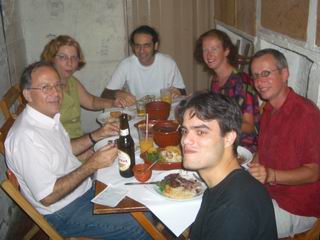
It’s a long way to Tipperary but the scenery west of São Paulo is not far removed from the hills of central Ireland. Neither are the towns, for that matter. You see a sign announcing the city limit… then you ride for 20km… see a horse or two… and wonder: Was that it? Eventually, there’ll be a one-street town with two or three churches, a filling station, a couple of burger joints and a pizzeria, a supermarket and a hairdresser.
Bargain of the month:
Darina’s wash, cut and blow-dry – 4 Euros
Kurt’s number 1 shave – 2 Euros
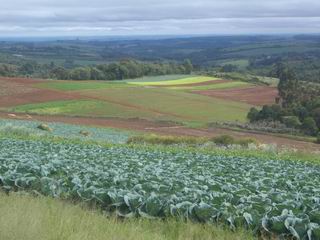
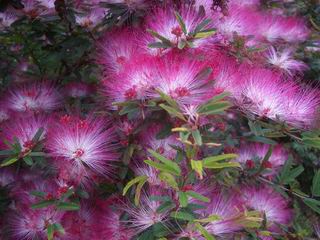
After two or three days on the bikes, the farms/ Fazendas get bigger (2000 acres). Huge expanses of maize, wheat, beans, soya and eucalypt dominate the landscape. The roads were built to endure a steady flow of agricultural products to the 20 million inhabitants of São Paulo. They are wide and in great repair. Actually quite a few of the main drags are toll roads and motorways, with a very generous hard shoulder built especially for us two cyclists. But the best is: not alone are cyclists officially allowed to avail of these amazing runways… but when we rock up to the toll booth, we are waved through gratis!
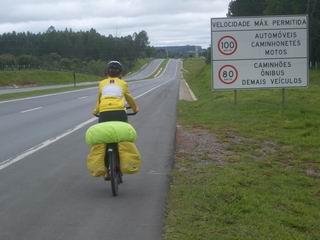
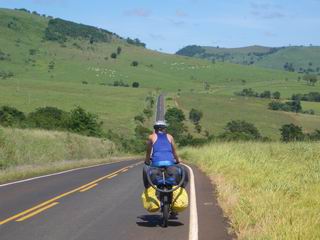
Distance is what we experience on this stretch. Distance with a capital D. Often we cycled 40 km without a sign of a house or shop. The terrain was quite hilly with bullet straight roads cutting through the panorama as far as the eye could see. On one occasion we took a dirt road for variety, and Kurt happened to find his idea of a short cut!
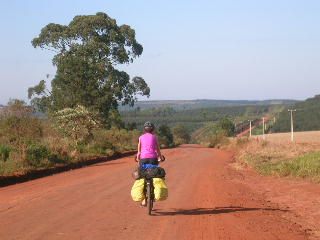
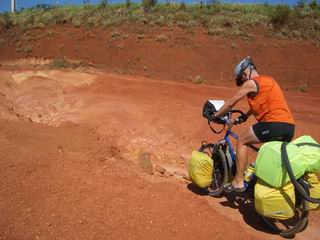
Bla bla text
Typical features on the roads (when there are any) are roadhouses and borracharías. Roadhouses are great stops for lunch. A standard meal is a T-bone steak, fried egg, minced meat patties, salad buffet, chicken casserole, rice and beans … all for the incredible amount of 2 or 3 Euros.
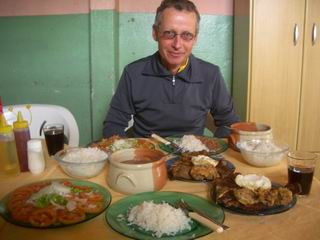
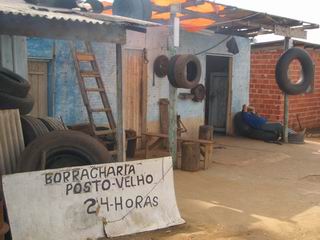
A borracharía in Spain would probably be where you would go to get drunk… but in Brazil, it’s where you get your puncture fixed. Then again, cars in Brazil are turned on booze and alcohol from sugar cane is the cheapest fuel on the market… so there could be some linguistic connection there!

Both roadhouses and filling stations are ideal campgrounds as they provide showers and there’s always a grassy spot for a wee tent. When out of town, wild camping assumes a whole new meaning in Brazil…
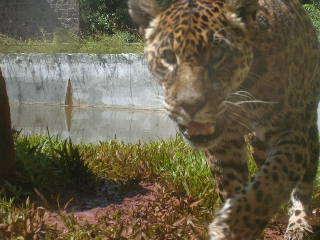
Just as we left the state of São Paulo and the best breakfast in Brazil (Hotel Itararé), and entered the state of Paraná, Darina started the habit of midday fresh water swimming. This time, alas with her prized camera. If any of the pictures have a characteristic underwater look, you’ll understand. A network of rivers and waterfalls, with private natural pools and Jacuzzis, at a safe distance from bored press photographers, provided us with very welcome respites from the heat.
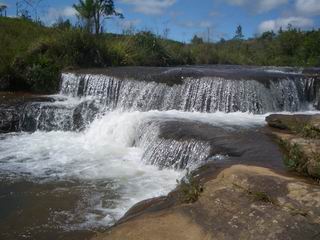

Yes, the heat! There were a few overcast days with temperatures in the 20s – perfect cycling weather for Darina. But then there have been a whole lot more sun shiny days of 35 to 40 degrees Celsius – perfect cycling weather for Kurt. On such days, 6 liters of Coca cola are converted into sweat or perspiration, (as the case may be) between the hours of 11am and 3pm.
After 1100km and almost 3 weeks pedaling through farmland, we arrived to the exciting skyline of Foz do Iguaçu, right on the border with Argentina and Paraguay. This city has quadrupled in size as a result of the construction of the world’s largest hydroelectric power station at Itaipu. The plant provides 25% of the electricity consumed by the whole of Brazil and 90 % of that of Paraguay. This huge project boasts a dam 7.7km long and 196m high. The construction iron and steel used at Itaipu would be sufficient to build 380 Eiffel towers. Big is the word. 1500 tourists visit the factory every day and are shuttled around in a convoy of air-conditioned bused to get a feel for these immense dimensions.
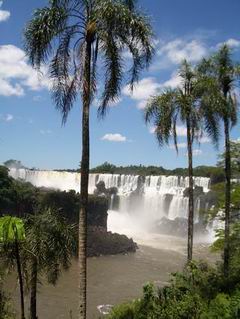
One may ask: why spend 3 weeks on a bike in never-never land? But when the carrot is a sight as spectacular as the Iguaçu waterfalls, all is revealed. Definitely worth the detour – the pictures speak for themselves.

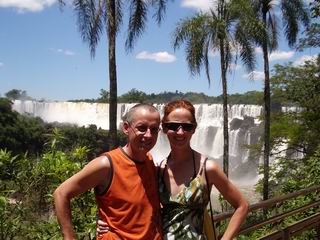
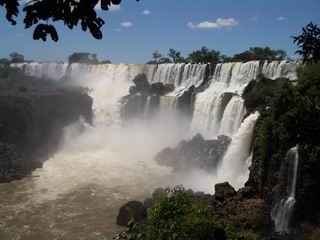
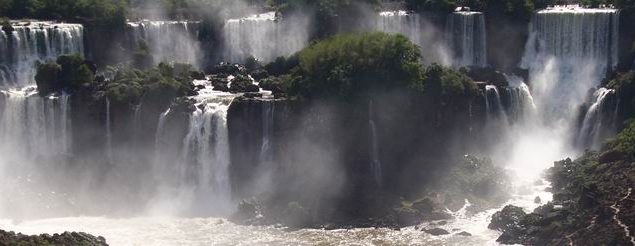
Now as we leave Brazil, we would like to thank all the Brazilians for their fabulous support and welcome. We’ve had people jump out of their cars to shake our hands, shouts of congratulations from all angles and numerous invitations to camp and stay overnight. For all your Emails and cheers – Muito obrigado and Parabens to YOU!
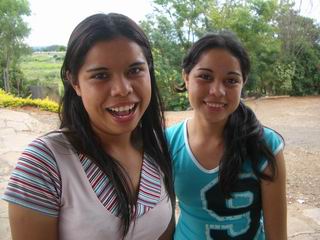
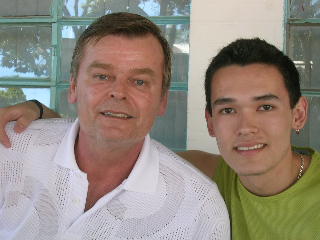
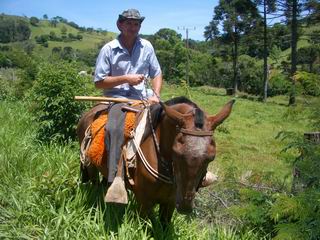
All in all, it has been great to wake up in the morning and smell the coffee… in Brazil!
The next leg will lead us through Paraguay, Missiones in Argentina, Southern Brazil and Uruguay, to reach Buenos Aires to ring in the New Year. We’ll keep you posted.
